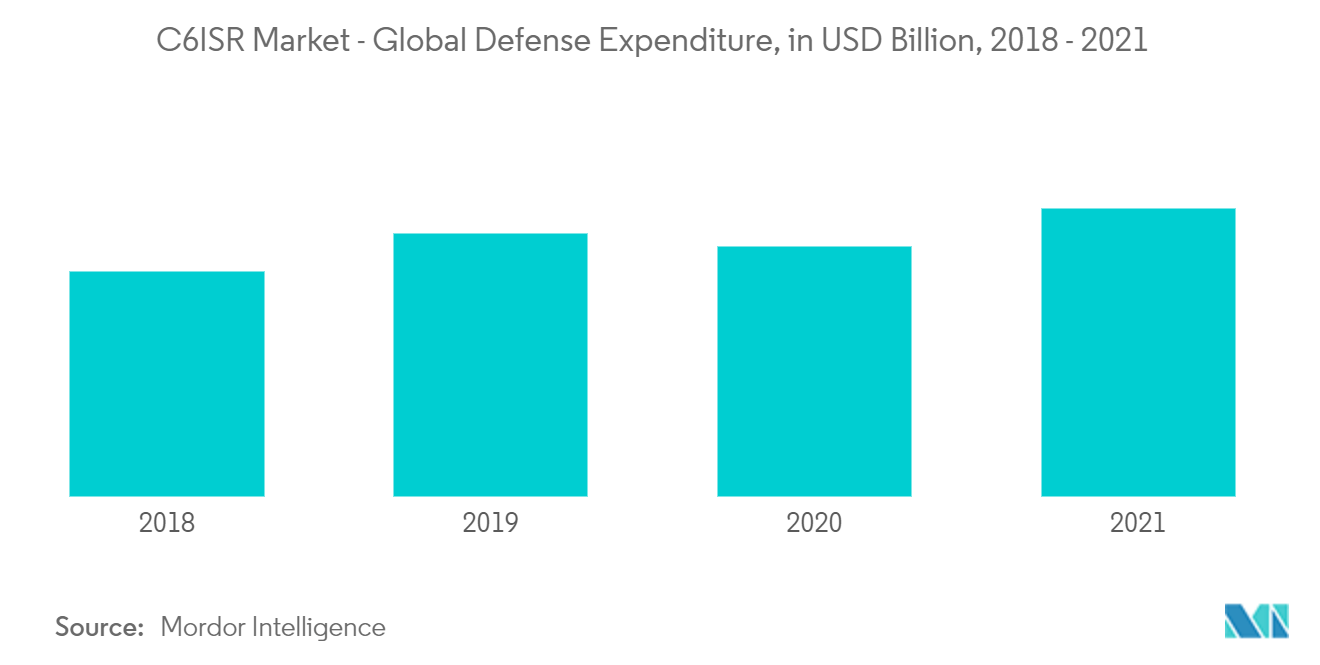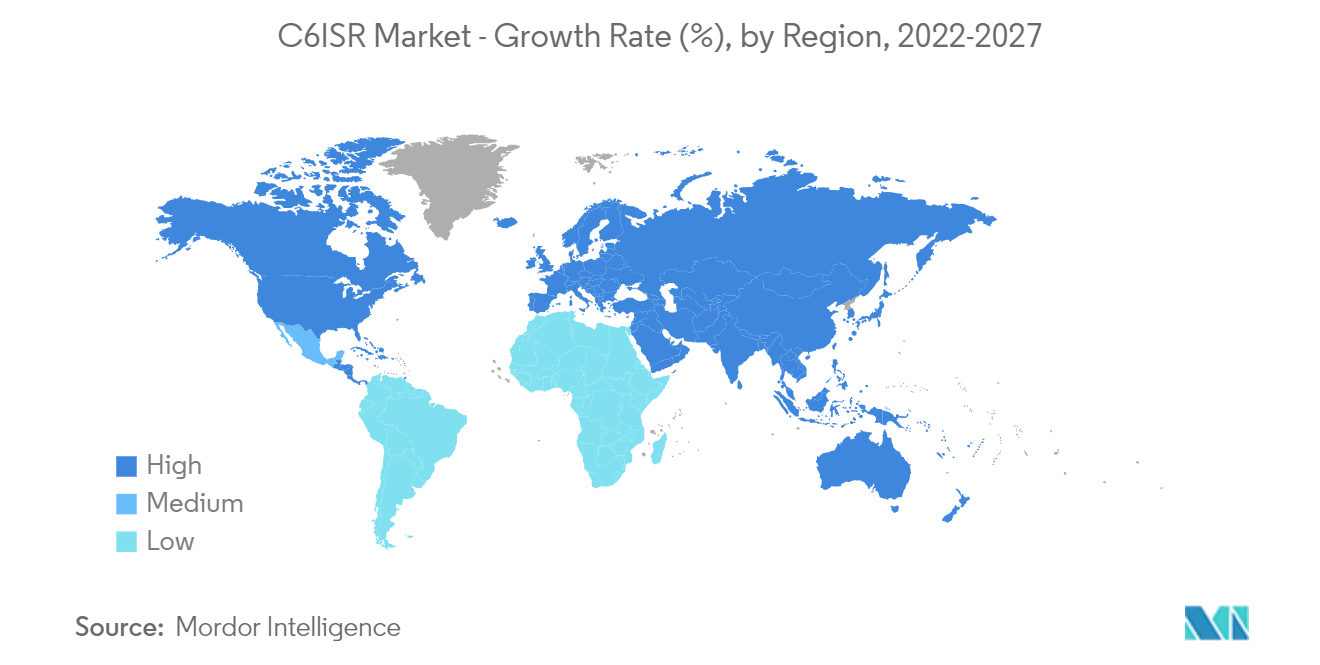Market Trends of C6ISR Industry
This section covers the major market trends shaping the C6ISR Market according to our research experts:
GROWTH IN THE GLOBAL DEFENSE EXPENDITURE
Owing to profound changes in the international strategic landscape, the configuration of international security systems has been undermined by the growing hegemonism, unilateralism, and power politics, which fueled several ongoing global conflicts.
Uncertainties in territorial rights, political tensions, and the quest for universal dominance among the military powerhouses are among the major causes disturbing the geopolitical scenario. In this regard, the most common reaction of the governments is to increase their military spending, to improve security in their respective countries.
Despite the economic impact of the COVID-19 pandemic, global defense expenditure continued to increase in 2020 and 2021. According to SIPRI, the global military expenditure in 2021 rose to USD 2113 billion, an increase of 0.7% in from 2020. billion. Global spending in 2021 was 12% higher than in 2012. The five largest military spenders in 2021 were the United States, China, India, the United Kingdom, and Russia, which together accounted for 62% of world military spending.
As the threats for the countries become higher, enhancing the militaries' C6ISR capabilities becomes important for every country. In this regard, several military programs are currently underway to effectively upgrade the C6ISR capabilities of various countries. To facilitate these programs, countries are investing huge amounts into the enhancement of such capabilities, either through indigenous development or through procurement from global vendors. These investments are further driven by the growth in defense expenditures.
The market studied is likely to grow steadily over the forecast period due to the growing investments toward obtaining faster and more secure C6ISR capabilities for the global armed forces. Countries are progressively adopting these systems for better situational awareness, secure and faster communication, and threat detection capabilities. On account of capability enhancement initiatives undertaken by global military powerhouses such as the United States, the United Kingdom, China, and India, the high demand for C6ISR systems is expected to drive the market during the forecast period.
In addition to the traditional demand from the US and European markets, several countries in Asia-Pacific, the Middle East, and Latin America are now focusing on augmenting their situational awareness and combat support capabilities. In this regard, several military C6ISR system development procurements, and modernization programs are currently underway, to enhance the combat capabilities of the armed forces. These programs are supported by the defense budgets.
In recent years, countries in these regions have placed orders for newer generation platforms and equipment that incorporate C6ISR systems when several such development programs are also underway. These programs are expected to run during the forecast period.
The development and procurement of such platforms and equipment demand huge defense spending from the countries, as the cost of the systems is immense. Thus, the growth in defense spending is expected to drive the growth of the market in the coming years.

North America is Expected to Witness Highest Growth Rate
The nature of battles has changed drastically with the advent of technology. For various military requirements, including communication, defense agencies globally are looking for advanced capabilities to meet the demand for more operationally responsive forces.
Global defense forces deploy the C6ISR systems to monitor and analyze points of interest located in hostile territory. Countries, such as the United States, Russia, and China, diverted their efforts toward the development of sophisticated and powerful C6ISR systems that can penetrate the defenses of hostile adversaries to obtain mission-critical information.
There is a growing emphasis on Network Centric Warfare (NCW) among the global militaries. Network-centric warfare involves the combination of emerging tactics, techniques and procedures that a networked force can employ to create a decisive warfighting advantage. In recent years, the way in which forces communicate, disseminate intelligence, are issued orders, and report back to their commanders has been revolutionized using networks. More specifically, computer, radio, and data networks link nearly all military assets at a state's disposal to each other and to the decision-makers.
The prime objectives of this concept are to make the battlefield more transparent, to achieve information dominance and create situational awareness at all levels, to disseminate target information in a timely manner to those who needed it, and to adjust C6 doctrine accordingly. On a broad scale, the objective was to shorten the sensor-to-shooter time and improve responsiveness
The networks that extract data from multiple data feeds to assimilate into a single combined intelligence picture amplify the effect of data collection by individual C6ISR systems, as overlaying the feeds of multiple systems enhances situational awareness to a level far beyond the capabilities of an individual system.
The focus of NCW is the assimilation of minimum information that needs to be exchanged. Thus, effective ways to capture that information and portray it into actionable intelligence require the integration of sophisticated sensors and subsystems to capture actionable intelligence.
Thus, the increasing adoption of network-centric warfare is expected to drive the demand for sophisticated C6ISR systems and fuel the growth of the market in focus during the forecast period.


